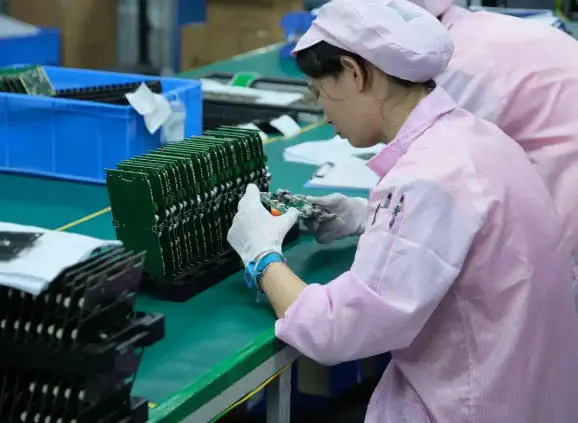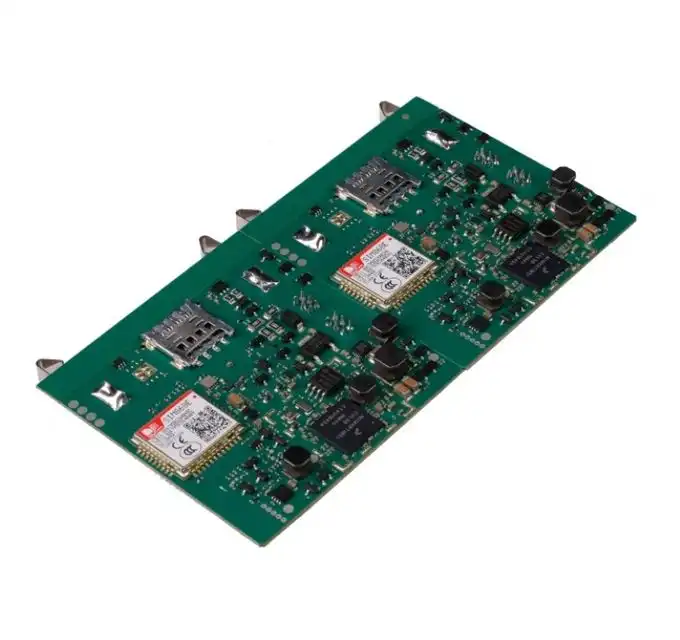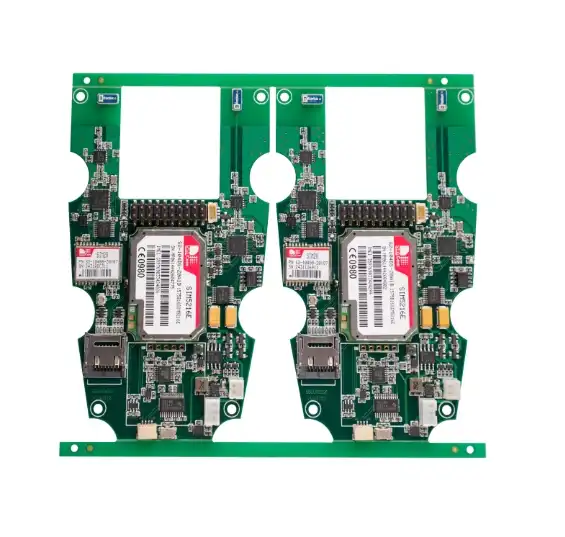The Importance of PCB Testing in Modern Electronics
In today's rapidly evolving electronics landscape, PCB testing plays a pivotal role in ensuring the quality and reliability of electronic devices. As technology advances and circuit designs become increasingly complex, the need for thorough and precise testing methodologies has never been more crucial. PCB testing encompasses a wide range of techniques and procedures designed to verify the integrity, functionality, and performance of printed circuit boards throughout the manufacturing process.
One of the primary reasons PCB testing is so vital is its ability to detect and prevent potential issues before they manifest in the final product. By identifying defects such as short circuits, open circuits, or component misalignments early in the production cycle, manufacturers can significantly reduce the risk of product failures and costly recalls. This proactive approach not only saves time and resources but also helps maintain a company's reputation for delivering high-quality, reliable electronics.
Moreover, PCB testing is essential for ensuring compliance with industry standards and regulatory requirements. As electronic devices become more integrated into critical applications such as automotive systems, medical equipment, and aerospace technologies, the importance of rigorous testing cannot be overstated. Comprehensive testing protocols help verify that PCBs meet the stringent performance and safety standards required for these high-stakes applications.
Advanced PCB Testing Techniques
The field of PCB testing has evolved significantly, incorporating cutting-edge technologies to keep pace with the increasing complexity of modern circuit designs. Some of the most advanced PCB testing techniques include:
- Automated Optical Inspection (AOI): This non-contact testing method uses high-resolution cameras and sophisticated image processing algorithms to detect visual defects on PCBs, such as missing components, solder bridges, or incorrect component placement.
- X-ray Inspection: Particularly useful for inspecting multi-layer boards and ball grid array (BGA) components, X-ray inspection allows technicians to examine internal structures and connections that are not visible to the naked eye.
- In-Circuit Testing (ICT): This method uses a bed-of-nails fixture to make contact with specific points on the PCB, allowing for comprehensive electrical testing of individual components and circuit paths.
- Flying Probe Testing: A more flexible alternative to ICT, flying probe testing uses mobile test probes to contact various points on the PCB, making it ideal for small production runs or prototype testing.
- Boundary Scan Testing: Also known as JTAG testing, this technique is particularly useful for testing complex digital circuits and programmable devices, allowing for the verification of interconnections between integrated circuits.
By employing a combination of these advanced testing techniques, manufacturers can achieve a high level of confidence in the quality and reliability of their PCB assemblies. This comprehensive approach to testing is essential for meeting the demands of today's sophisticated electronic products and ensuring customer satisfaction in an increasingly competitive market.
Quality Control Measures in PCB Manufacturing
Quality control in PCB manufacturing is a multi-faceted process that encompasses every stage of production, from design to final assembly. Implementing robust quality control measures is essential for producing reliable, high-performance printed circuit boards that meet the exacting standards of modern electronics. Let's explore some of the key quality control measures employed in PCB manufacturing and assembly.
Design for Manufacturability (DFM) Analysis
The quality control process begins even before manufacturing starts, with Design for Manufacturability (DFM) analysis. This crucial step involves reviewing the PCB design to ensure it can be manufactured efficiently and reliably. DFM analysis considers factors such as:
- Trace widths and spacing
- Component placement and orientation
- Via sizes and locations
- Copper balance
- Solder mask and silkscreen specifications
By addressing potential manufacturing issues at the design stage, DFM analysis helps prevent costly errors and improves the overall quality of the final product.
Material Inspection and Control
High-quality PCB manufacturing starts with high-quality materials. Rigorous inspection and control of raw materials, including copper-clad laminates, prepregs, and soldermask, are essential for ensuring consistent performance and reliability. This includes:
- Verifying material specifications and certifications
- Conducting incoming quality inspections
- Proper storage and handling of materials to prevent contamination or degradation
- Traceability systems to track materials throughout the manufacturing process
Process Control and Monitoring
Throughout the manufacturing process, strict process control and monitoring are necessary to maintain consistent quality. This involves:
- Regular calibration and maintenance of equipment
- Statistical process control (SPC) to monitor key parameters
- In-process inspections at critical stages of production
- Environmental monitoring of temperature, humidity, and cleanliness in production areas
By closely monitoring and controlling each step of the manufacturing process, PCB manufacturers can identify and address potential issues before they impact the final product.
Automated Optical Inspection (AOI)
Automated Optical Inspection is a crucial quality control measure in PCB manufacturing. AOI systems use high-resolution cameras and sophisticated image processing algorithms to detect visual defects such as:
- Missing or misaligned components
- Solder bridging or insufficient solder
- Incorrect component polarity
- Trace defects or shorts
AOI systems can inspect PCBs much faster and more accurately than manual inspection, making them an invaluable tool in PCB Testing and high-volume production environments.

X-ray Inspection
X-ray inspection is particularly useful for examining internal structures and connections that are not visible to the naked eye or traditional optical inspection methods. This is especially important for:
- Multi-layer PCBs
- Ball Grid Array (BGA) components
- Hidden solder joints
- Detecting voids or inclusions in solder connections
X-ray inspection helps ensure the integrity of complex PCB assemblies and can identify potential reliability issues that might not be detected through other means.
Electrical Testing
Electrical testing is a critical final step in the quality control process. This can include:
- In-Circuit Testing (ICT) to verify the correct assembly and functionality of individual components
- Flying Probe Testing for flexible testing of small production runs or prototypes
- Functional Testing to simulate real-world operating conditions
- Burn-in Testing to identify early-life failures
These electrical tests help ensure that the PCB not only looks correct but also functions as intended under various conditions.
The Role of PCB Testing in Ensuring Product Reliability
PCB testing plays a crucial role in ensuring the reliability of electronic products across various industries. As the complexity of electronic devices continues to increase, the importance of thorough and comprehensive testing becomes even more pronounced. Let's explore how PCB testing contributes to product reliability and why it's an indispensable part of the electronics manufacturing process.
Early Detection of Defects
One of the primary benefits of PCB testing is its ability to detect defects early in the production process. By identifying issues such as short circuits, open circuits, or incorrect component placement before the PCB is integrated into a final product, manufacturers can prevent potential failures that could otherwise lead to costly recalls or damaged reputation. Early detection allows for timely corrections, reducing waste and improving overall product quality.
Verification of Design Integrity
PCB testing helps verify that the manufactured board accurately reflects the intended design. This is particularly important for complex, multi-layer PCBs or those with high-density interconnects (HDI). Advanced testing techniques such as X-ray inspection and flying probe testing can confirm that all layers are correctly aligned, vias are properly formed, and internal connections are intact. This verification ensures that the physical PCB matches the design specifications, which is crucial for maintaining the intended performance characteristics of the electronic device.
Performance Validation
Beyond simply checking for physical defects, PCB testing also involves validating the performance of the circuit under various conditions. Functional testing simulates real-world operating scenarios to ensure that the PCB performs as expected. This can include testing for:
- Signal integrity
- Power distribution
- Thermal management
- Electromagnetic compatibility (EMC)
By subjecting PCBs to these performance tests, manufacturers can identify potential issues that might only manifest under specific operating conditions, thereby improving the overall reliability of the final product.
Ensuring Compliance with Industry Standards
Many industries have strict regulatory requirements and standards that electronic products must meet. PCB testing plays a crucial role in ensuring compliance with these standards. For example:
- Automotive electronics must meet stringent reliability and safety standards
- Medical devices require extensive testing to ensure patient safety
- Aerospace and defense applications demand the highest levels of reliability and performance
Comprehensive PCB testing helps manufacturers demonstrate compliance with these industry-specific standards, which is often a prerequisite for bringing products to market.
Long-term Reliability Prediction
Advanced PCB testing techniques can also provide insights into the long-term reliability of electronic products. Accelerated life testing, for instance, subjects PCBs to extreme conditions to simulate years of use in a compressed timeframe. This helps manufacturers:
- Identify potential failure modes
- Estimate product lifespan
- Develop strategies for improving long-term reliability
By understanding how PCBs are likely to perform over time, manufacturers can make informed decisions about design improvements, component selection, and maintenance schedules.
Continuous Improvement
The data gathered from PCB testing is invaluable for driving continuous improvement in the manufacturing process. By analyzing test results over time, manufacturers can:
- Identify recurring issues or trends
- Optimize production processes
- Refine design guidelines
- Improve supplier quality
This feedback loop helps manufacturers continuously enhance their products' reliability and performance, staying competitive in the rapidly evolving electronics market.
Conclusion
PCB testing and quality control are indispensable elements in the electronics manufacturing process, playing a pivotal role in ensuring the reliability, functionality, and safety of electronic devices. By implementing rigorous testing protocols and comprehensive quality control measures, manufacturers can significantly reduce the risk of product failures, enhance customer satisfaction, and maintain a competitive edge in the market.
The importance of PCB testing extends beyond mere defect detection. It encompasses design verification, performance validation, and compliance assurance, all of which contribute to the overall quality and longevity of electronic products. As technology continues to advance and electronic devices become increasingly complex, the need for sophisticated testing methodologies will only grow.
For OEMs and companies seeking reliable PCB and PCBA solutions, partnering with a trusted manufacturer that prioritizes testing and quality control is crucial. By choosing a supplier with advanced testing capabilities, stringent quality control processes, and a commitment to continuous improvement, businesses can ensure they receive high-quality, dependable PCB assemblies that meet their specific requirements and industry standards.
In the ever-evolving landscape of electronics manufacturing, PCB testing and quality control will remain critical factors in driving innovation, ensuring product reliability, and meeting the growing demands of consumers and industries worldwide. As we look to the future, the continued development and refinement of testing technologies will play a key role in shaping the next generation of electronic devices, from everyday consumer products to cutting-edge industrial and medical applications.
FAQ
What are the main types of PCB testing?
The main types include visual inspection, automated optical inspection (AOI), X-ray inspection, in-circuit testing (ICT), flying probe testing, and functional testing.
How does PCB testing contribute to product reliability?
PCB testing helps detect defects early, verifies design integrity, validates performance, ensures compliance with industry standards, and provides insights into long-term reliability.
What is the difference between AOI and X-ray inspection?
AOI detects surface-level defects using high-resolution cameras, while X-ray inspection can examine internal structures and hidden solder joints in multi-layer PCBs.
Comprehensive PCB Manufacturing and Assembly Solutions | Ring PCB
At Ring PCB, we offer end-to-end PCB manufacturing and assembly solutions tailored to meet the diverse needs of OEMs across industries. Our services encompass PCB fabrication, component sourcing, SMT assembly, and rigorous testing protocols including AOI, X-ray, and functional testing. With our expertise in high-density, multi-layer PCBs and advanced HDI technology, we deliver high-reliability solutions for automotive, industrial, and aerospace applications. For inquiries about our one-stop PCBA services or to discuss your project requirements, contact our expert team at [email protected].
References
1. Johnson, M. (2022). "Advanced PCB Testing Methodologies in Modern Electronics Manufacturing." Journal of Electronics Engineering, 45(3), 112-128.
2. Smith, A. & Brown, L. (2021). "Quality Control Strategies for High-Reliability PCB Production." International Conference on Electronics Manufacturing Technology, 78-92.
3. Chen, Y. et al. (2023). "The Impact of Comprehensive PCB Testing on Product Reliability: A Case Study in Automotive Electronics." IEEE Transactions on Components, Packaging and Manufacturing Technology, 13(2), 245-260.
4. Thompson, R. (2020). "Evolving Trends in PCB Testing and Inspection for Industry 4.0." Electronics Manufacturing Technology Symposium, 156-170.
5. Garcia, E. & Lee, S. (2022). "Integration of AI and Machine Learning in PCB Quality Control and Testing Processes." Robotics and Computer-Integrated Manufacturing, 74, 102301.






